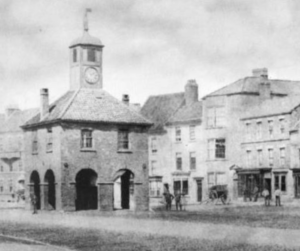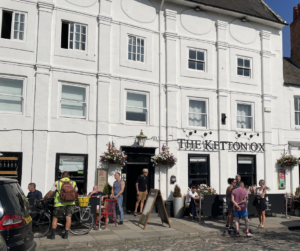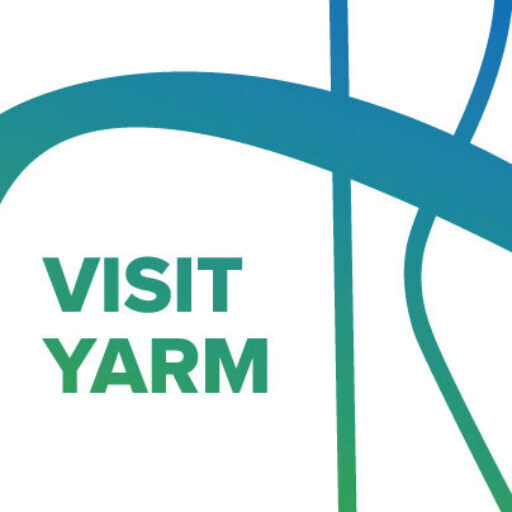Town Hall

Before Yarm had a Town Hall it had a toll booth. This toll booth had a bell that was rung to let people know if there was a large flood or a fire. In 1710 the toll booth was knocked down and the Town Hall was built by the Lord of the Manor. The bell was kept and moved to the Town Hall. On the ground level of the Town Hall there was a market space with eight open arches and above was a courthouse for magistrates to hear cases.
In 1888 two of the arches were blocked up to make room for Yarm’s weighing machine and later in the 1930s other arches were blocked up so that there could be toilets and a bus shelter. On the south side of the Town Hall there are marked stones showing how high the floods were in 1771 and 1881. You can also find two plaques on this side of the Town Hall; one to honour the local members of the first railway committee and another to remember the men from Yarm who died during the Boer War.
Yarm Methodist Chapel, Chapel Wynd
Yarm Methodist Chapel was built in 1763 and was visited not long after by the famous Methodist leader, John Wesley. Even though John Wesley played a part in the building of fourteen octagonal chapels, Yarm Methodist Chapel was his favourite as he called it “by far the most elegant in England”.
The Ketton Ox Pub

This is one of the oldest buildings on Yarm High Street and was named after an ox raised by a man called Charles Colling. Oxen at that time would only cost £20 but this ox was so special that somebody offered to pay £2,000 for it!
Hope House
Hope House is thought to have been built in the early 1600s, which would make it the oldest home in Yarm. When the railway viaduct was built part of the house had to be removed to make room for it.
The George and Dragon Pub
This pub is known as the birthplace of the Stockton & Darlington Railway as it was here that important men met to discuss setting up a new railway that would bring coal from the Durham coalfields to the River Tees at Stockton. This was to become the world’s first passenger railway service.
The Friarage
In 1717 the (first) Friarage was built on the site of a Dominican Friary. When it passed to a man called Edward Meynell ,he rebuilt it (sometime between 1770 and 1775) and this is the building that is there today. As well as building a new home, Mr Meynell also had new gardens laid out that had birch and fruit trees as well as currant bushes. In the early 1800s Mr Meynell opened his gardens so that anyone could come and walk there and this became a popular thing to do for both rich and poor Yarm people.
Up until the beginning of the First World War, Yarm Gala was held in the grounds of The Friarage at Whitsuntide (the eighth Sunday after Easter). Up to 26,000 people would come from afar to enjoy stalls, sideshows, races and swimming events in the river. Now The Friarage is the home of Yarm School who moved into the building in September 1980.
Next to The Friarage is The Dovecote which is one of Yarm’s oldest buildings. Built at the end of the Tudor times The Dovecote is an octagonal shaped building which would be used by the Tudors for keeping birds.

Yarm Castle
We have to mention the castle, although it is a model rather than an actual building. Built by David Doughty, who lived in Commondale House in the 1880’s, on the wall of a house in West Street, it is quite an interesting attraction to visitors. A model of the Town Hall was later added by David’s son.
